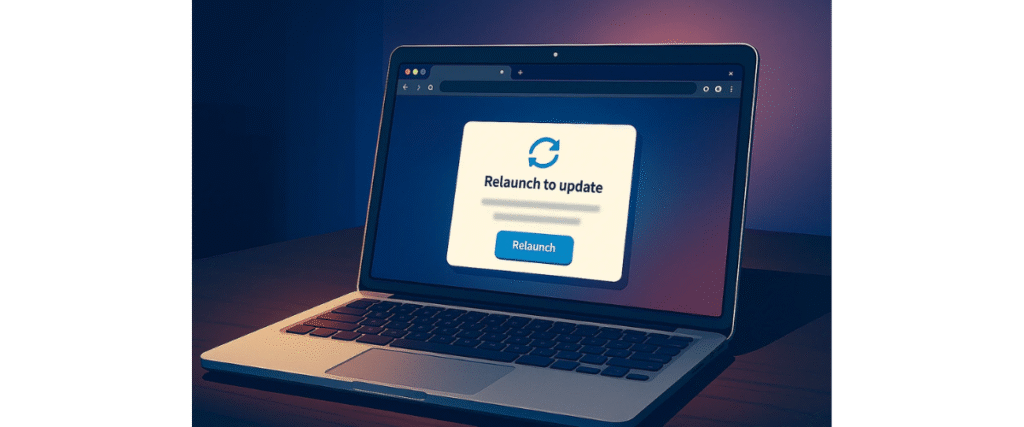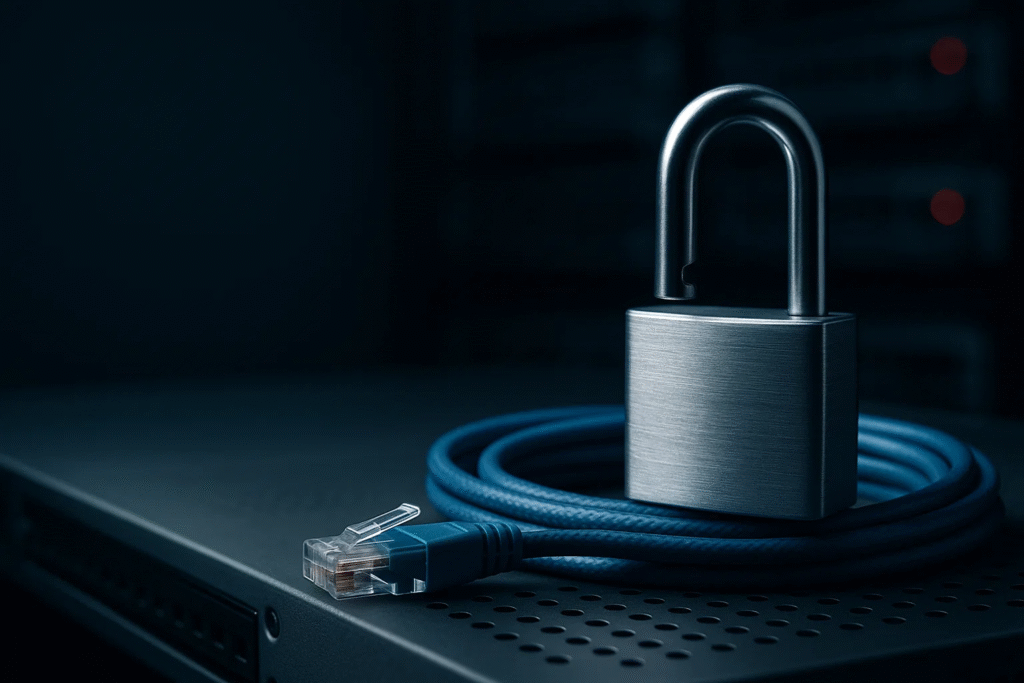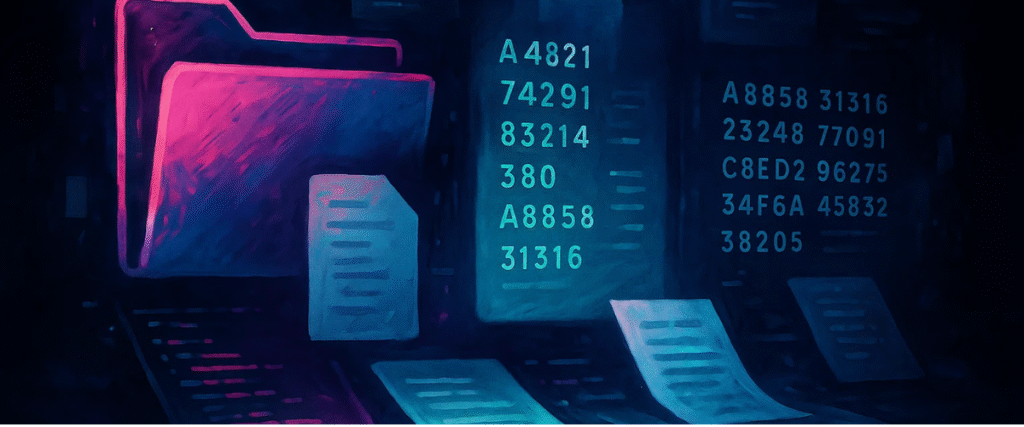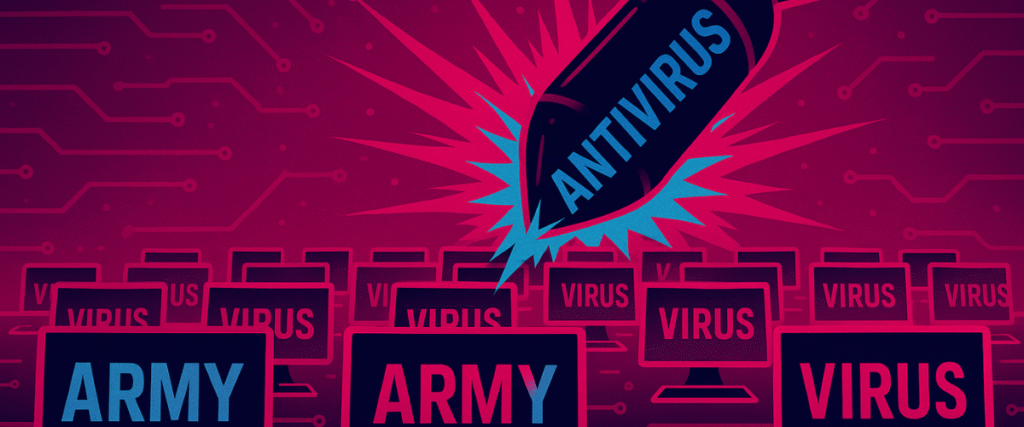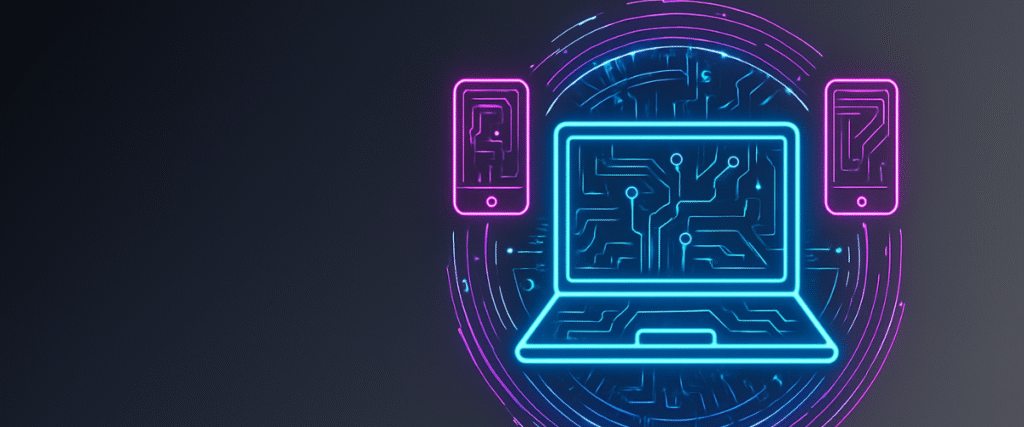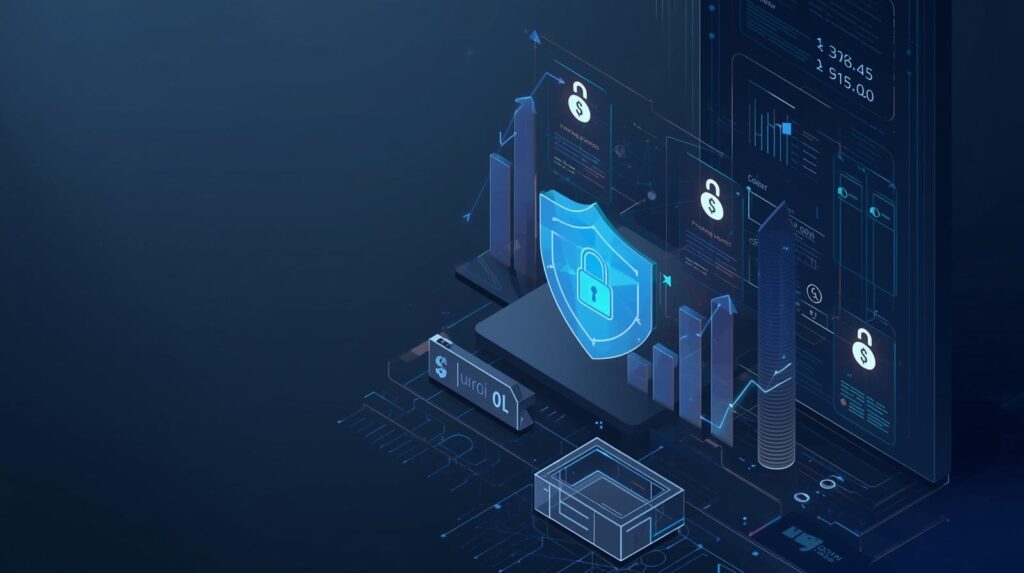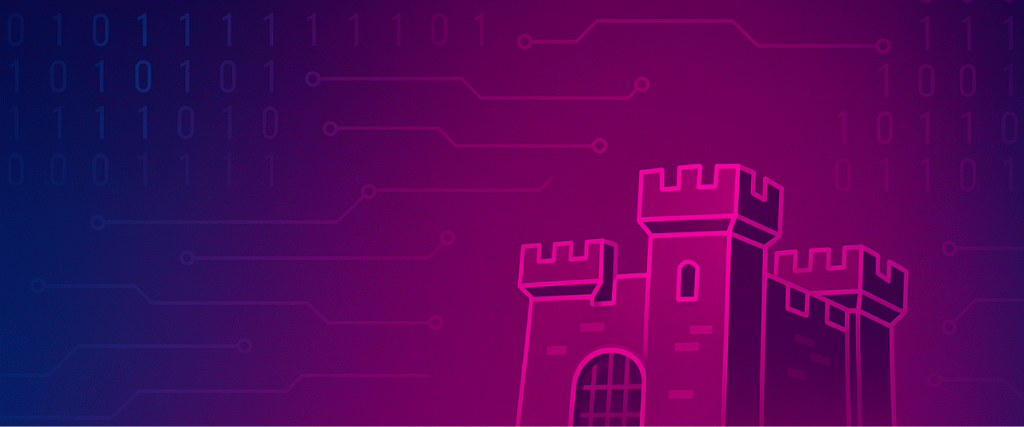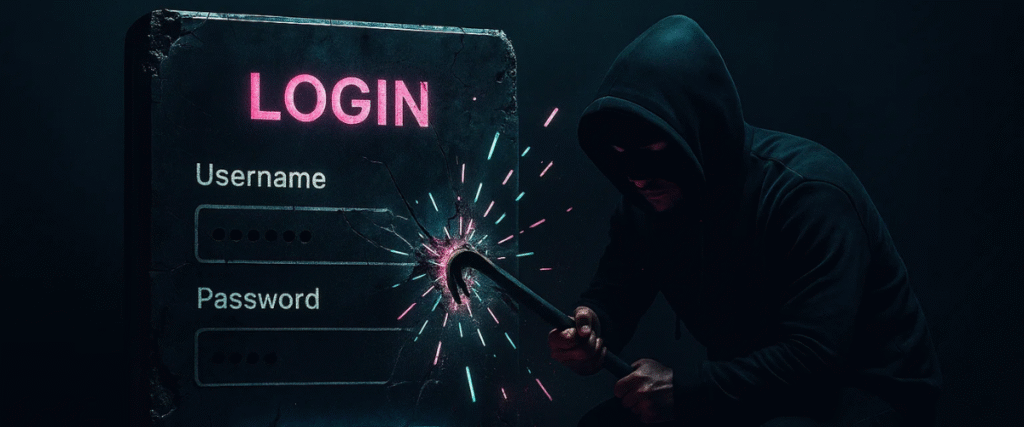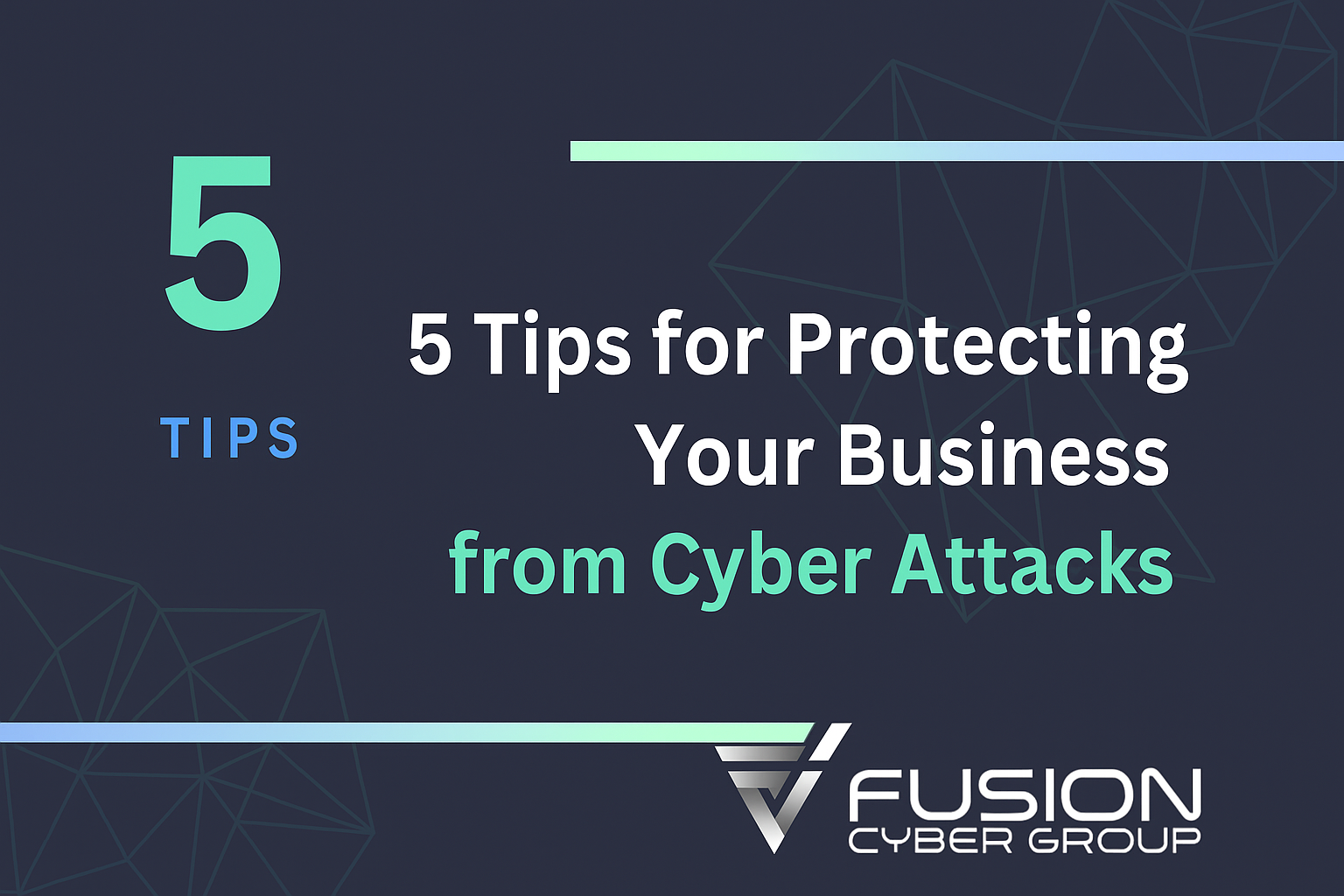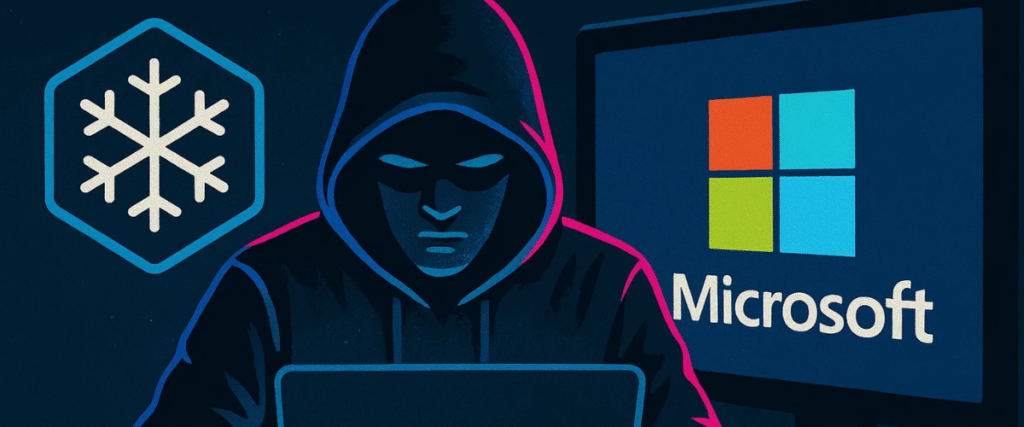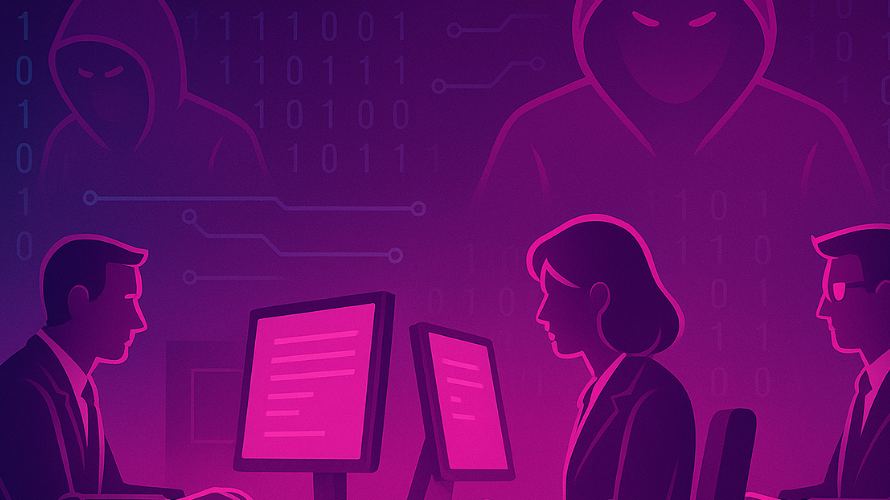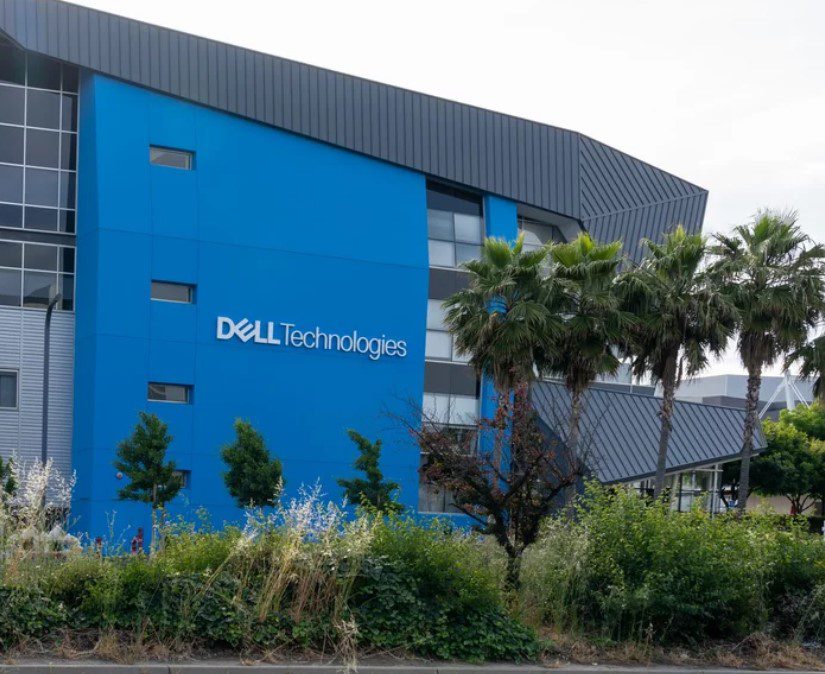
Managed IT for Real-World Results—Predictable Costs. Fewer Outages. Stronger Security.
Canadian SMBs get enterprise-grade IT—without enterprise overhead.
Talk to a Fusion Cyber expert today to stabilise, secure, and scale your business.
The New Reality of IT for SMBs
Technology now touches every part of your business—sales, onboarding, invoicing, delivery, and post-sale support. Hybrid work, cloud apps, mobile devices, and SaaS create agility and complexity at the same time. Each new service brings logins, permissions, data flows, and integration points that must be configured, monitored, and secured.
Threats continue to rise while expectations tighten. Attackers automate discovery and exploitation. Insurers raise minimum security requirements. Customers expect “always on” service. The result for small and mid-sized businesses is constant pressure: do more, move faster, and stay secure—without enterprise headcount.
Most SMBs grew IT organically. A few point solutions here, a vendor there, and a heroic internal generalist keeping things afloat after hours. That model breaks at scale. Unpatched systems linger. Backups exist but restores aren’t tested. Key knowledge lives in one person’s head and isn’t documented. Tickets get triaged ad hoc, so issues recur. Costs spike unpredictably when outages, hardware failures, or incidents hit. Leadership loses visibility, and teams lose time to avoidable friction.
Managed IT Services reset the operating model. Instead of reactive “break/fix,” you adopt proactive, process-driven operations delivered by a provider with the tooling, depth, and 24/7 coverage you can’t easily replicate in-house. Think standardised builds, automated patching, monitored backups with scheduled restore tests, and a help desk that answers in minutes—not hours. Add a vCIO (virtual CIO) who aligns the roadmap with budget and business goals, and IT shifts from a cost centre to a performance engine.
In the first 60–90 days, noise drops because known issues are eliminated at the root. Visibility rises through dashboards and monthly reports. Security posture strengthens as MFA (multi-factor authentication), EDR (endpoint detection and response), and email filtering close common attack paths. Employees get consistent setups and faster resolutions, so productivity improves. Most importantly, leaders regain control through clear SLAs, predictable OPEX, and a plan tied to measurable outcomes like uptime, mean time to resolve, patch compliance, and successful restore tests.
What Managed IT Services Include (and Why It Matters)
Managed IT isn’t a single tool—it’s a disciplined operating system for technology. At the core is a 24/7 help desk with defined service-level agreements (SLAs) for first response and resolution. When staff can reach a knowledgeable technician at any hour, small issues don’t snowball into outages.
Proactive maintenance sits above the help desk. Automated patching for operating systems and third-party apps, scheduled firmware updates, and routine health checks surface anomalies before they become incidents. This preventive rhythm keeps systems current and stable.
Security is integrated, not appended. A security-first stack typically includes EDR to detect suspicious behaviour on endpoints, DNS/web filtering to block malicious destinations, hardened email security to catch phishing and business email compromise, and enforced MFA to reduce account takeover risk. Vulnerability scanning with prioritised remediation closes known weaknesses quickly, while SIEM/logging centralises telemetry so investigations don’t stall. These controls work together; if one layer misses, another catches.
Resilience depends on backup and disaster recovery. Automated, versioned, and encrypted backups are table stakes; the differentiator is testing. Regular restore drills document recovery time objectives (RTOs) and prove you can bring systems back under pressure. For critical workloads, image-based backups and failover options minimise downtime during hardware failure or ransomware.
Lifecycle and asset management reduce waste and risk. Standard device catalogues, golden images, warranty tracking, and secure disposal keep the fleet current and compliant. Vendor management consolidates renewals and support under one accountable partner, eliminating finger-pointing and surprise auto-renewals.
Strategy ties it together. A vCIO runs quarterly business reviews (QBRs), translating company goals into a practical roadmap: refresh cycles, cloud adoption, policy improvements, training plans, and budget forecasts. Reporting closes the loop with metrics leadership cares about—uptime, ticket volume and CSAT, patch rates, backup health, phishing simulation results, and open risk items. The outcome is simple: fewer disruptions, faster recovery, reduced breach likelihood, lower total cost of ownership, and technology that supports growth.

Why Canadian SMBs Benefit Most
Canadian SMBs operate in a demanding environment. We balance bilingual teams, cross-provincial regulations, and regional connectivity challenges while selling to customers who expect enterprise-grade reliability. Regulations such as PIPEDA and Québec’s Law 25 elevate privacy obligations and evidence requirements. Even when you aren’t in a regulated industry, your customers often are—so data protection expectations flow down the supply chain. Managed IT Services help you demonstrate due care with documented policies, access reviews, and audit-ready reports.
Talent constraints amplify the need. Recruiting and retaining specialists across Microsoft 365, identity, networking, cloud, security operations, and incident response is tough for any SMB. Coverage gaps appear during overnights, weekends, and holidays—precisely when attackers take advantage. A provider with 24/7/365 capabilities and proven escalation paths closes that gap without forcing you to carry enterprise payroll.
Economics matter as well. The hidden costs of ad hoc IT—downtime, lost productivity, failed projects, duplicated subscriptions, and unplanned consulting during emergencies—often eclipse a predictable managed services fee. Standardisation and vendor consolidation reclaim budget. Cyber insurance underwriters increasingly look for controls like MFA, EDR, logging, and tested backups. With a managed partner, you can implement and prove those controls faster, keeping premiums in check and policies valid.
Data residency and sovereignty are front of mind in Canada. A mature MSP/MSSP helps you choose Canadian regions for backups and logs, align retention to policy, and document supplier commitments. For nationally distributed teams, modern remote management provides consistent experiences coast-to-coast, with bilingual support where required.
Most importantly, managed services reduce friction for your people. New hires get Day-1 readiness. Travelling executives access systems securely with conditional access instead of workarounds. Front-line staff spend less time waiting and more time serving customers. When technology “just works,” your team can focus on revenue, relationships, and reputation.
Budget & ROI: What Managed IT Really Costs (and Saves)
Managed IT should turn unpredictable IT spend into a steady operating expense while reducing risk. Leaders don’t just want features; they want financial outcomes they can defend.
How providers price
- Per user/month or per device/month for support, patching, and monitoring
- Fixed monthly retainer for a defined scope with SLAs
- One-time onboarding fee for discovery, agent deployment, hardening, and documentation
- Project rate card for out-of-scope work (migrations, office moves, refreshes)
What’s typically included
- 24/7 help desk, remote support, and on-site dispatch guidelines
- Automated OS/third-party patching, firmware maintenance, health checks
- Security stack (MFA enforcement, EDR, email security, DNS filtering, logging)
- Backup monitoring and scheduled restore tests
- Asset lifecycle, warranty tracking, and vendor management
- vCIO and quarterly business reviews with metrics and a living roadmap
Common exclusions to clarify upfront
- Legacy systems without vendor support
- Custom line-of-business apps without source/vendor access
- After-hours projects, expedited work, or major incidents outside the security programme terms
Where savings come from
- Fewer outages and faster MTTR (less lost revenue and staff idle time)
- Vendor consolidation and licence rationalisation
- Lower emergency consulting and after-hours premiums
- Better cyber-insurance posture when controls are enforced and evidenced
A simple way to justify ROI
- Annual ROI ≈ (Downtime avoided + licences/vendor waste eliminated + reduced break/fix + insurance benefits) − (Managed IT fees + onboarding)
- Track it with plain metrics: uptime %, P1/P2 response/resolution, patch compliance, successful restore tests, phishing rates, device age profile, and spend by vendor.
Timeline
Stabilisation in 30–60 days; measurable savings typically show up within one to two quarters. Keep the QBR tight: decisions, owners, dates, next-step budget impact.

Action Plan: Steps You Can Take Today
Start with identity. Enforce MFA across email, VPN, and admin tools within the next two weeks. Remove stale accounts and shared credentials, and enable conditional access policies that respond to risk signals like impossible travel or unfamiliar devices. Assign an owner for quarterly access reviews and document the process so it survives staff turnover.
Automate patching. Configure operating system and third-party updates with maintenance windows that protect business hours. Target at least 95% compliance for critical updates within 14 days and report exceptions by name until resolved. Include firmware updates for network gear and security appliances—those are missed most often.
Deploy EDR with automatic isolation. Choose a platform that flags suspicious behaviour such as rapid file encryption or credential dumping and can quarantine endpoints immediately while alerts route to the help desk or SOC. Pair EDR with hardened email security and DNS filtering to block threats before they reach devices.
Back up like you mean it. Implement automated, encrypted backups with immutability where supported and store copies offsite. Schedule quarterly restore drills for your most important systems—file shares, ERP/CRM, and identity stores. Capture RTO/RPO results and improvement actions in your QBR.
Write the basics. Publish Acceptable Use, Access Control, Backup & Retention, Incident Response, and Change Management policies. Keep them short and practical, and train staff on what matters: reporting suspicious emails, using a password manager, and recognising sensitive data.
Baseline risk. Run a lightweight security assessment to map gaps across identity, endpoint, network, email, backup, and policy. Prioritise fixes that reduce the most risk quickly—MFA, EDR, and backup tests—then schedule structural work such as network segmentation and legacy system retirement.
Select your partner. Shortlist MSPs/MSSPs and request scope, SLAs, sample reports, and a security stack diagram. Ask about onboarding—asset discovery, agent deployment, policy hardening, and the first QBR. Agree on a 30–60-day stabilisation sprint with clear milestones and owners. From there, switch to quarterly cycles that blend improvements like device refreshes and training with strategic projects such as cloud optimisation, DLP, or Zero Trust pilots. Every step should be measurable, owned, and on the calendar.
How to Choose the Right Managed Partner
Start with security DNA. A credible partner leads with controls such as MFA enforcement, EDR, email security, DNS filtering, vulnerability management, and centralised logging. They operate a 24/7/365 monitoring function with on-call escalation, documented incident runbooks, and defined P1/P2 response times. Ask to see the playbooks and how they work in practice.
Examine transparency and evidence. Request sample monthly reports and QBR decks. You should see metrics that matter—uptime, SLA performance, patch and backup compliance—plus open risks with owners and recommendations tied to your goals. Ask how they prove backups are recoverable and how often they run restore tests. If the evidence isn’t routine, it won’t be there when audits or insurance ask for it.
Scrutinise onboarding. Strong providers begin with asset discovery, identity hardening, agent deployment, and patch/backup baselining. They document credentials and architecture diagrams securely, establish change control, and set a standard device image. Expect a 30–60-day stabilisation plan with milestones, then a transition to quarterly improvements.
Review scope and pricing clarity. Look for a clean statement of work outlining what’s included and excluded, a clear rate card for projects, and renewal terms without surprises. Consolidation of vendors through the MSP can help, but make sure you retain data portability and an exit path for logs, backups, and documentation.
Validate compliance and data residency. Ensure your partner can align controls with PIPEDA and, if applicable, Law 25 requirements. Confirm where backups and logs reside and how retention is enforced. For distributed teams, ask about bilingual support and Canada-friendly service hours.
Assess vCIO maturity and culture fit. The best partners challenge assumptions, quantify trade-offs, and translate risk into business language. Meet the vCIO who will run your QBRs and ask for references from similarly sized Canadian organisations. Prioritise a team that helps you invest based on impact, not hype.
Test incident readiness. Run a tabletop exercise together and watch how they coordinate roles, communicate, and make decisions under pressure. A good MSP/MSSP leaves you more confident, more prepared, and measurably safer—before a real incident ever hits.

Why Fusion Cyber
Fusion Cyber is a Montréal-based MSSP/MSP that secures SMBs and co-managed enterprises with enterprise-grade defences priced for smaller teams. Founded in 1985 and incorporated in 2004, we bring decades of operational experience to modern IT challenges. Our certified experts (CEH, PNPT, OSCP, CISSP, CISA) operate within established frameworks like MITRE ATT&CK and the Lockheed Martin Cyber Kill Chain, ensuring every control has a place and purpose in the adversary’s lifecycle.
For your business, that means a single accountable partner for support, security, and strategy. Our 24/7/365 SOC monitors your environment continuously, while our help desk resolves staff issues quickly with defined SLAs. We deploy a security-first stack—EDR, MFA, email security, DNS filtering, vulnerability management, and centralised logging—then validate resilience through scheduled backup restore tests and periodic disaster recovery exercises.
You’ll work with a vCIO who meets you quarterly to plan refresh cycles, roadmap improvements, and build budgets with clarity. Our reporting translates operations into business metrics: uptime, response times, patch and backup compliance, phishing trends, and open risks with owners and timelines. We standardise devices with golden images and lifecycle tracking, streamline renewals through vendor management, and keep documentation complete and secure so knowledge never lives with one person.
Most importantly, our incentives align with yours. Fully onboarded clients are protected by our financially backed Cybersecurity Guarantee: if you’re breached, we fund incident response, containment, and business recovery according to the programme terms. That commitment exists because we design, operate, and validate controls that measurably reduce risk.
If you want fewer outages, stronger security, and budgets you can count on, we’re ready to help. Let’s stabilise the day-to-day, harden your defences, and build a roadmap that supports growth.
Featured links:
FAQ:
What’s the business case for Managed IT vs. break/fix?
Break/fix waits for outages, so costs spike and staff lose time. Managed IT prevents issues with patching, monitoring, and tested backups. You get predictable OPEX, defined SLAs for response and resolution, and a roadmap aligned to growth. The net effect is fewer disruptions, stronger security, and better use of budget—because you’re paying for outcomes, not emergencies.
What changes in the first 60–90 days?
Noise drops as recurring issues are fixed at the root. Dashboards and monthly reports restore visibility. MFA, EDR, and email filtering close common attack paths. Standard device builds speed up support. Leaders get control back with clear SLAs, patch-rate targets, and scheduled backup restore tests tied to recovery objectives. It’s a stabilisation sprint that sets the foundation for continuous improvement.
How does Managed IT help with PIPEDA and Québec’s Law 25?
Managed IT brings structure: access reviews, documented policies, logging, and evidence you can show to auditors or customers. Controls like MFA, EDR, and tested backups reduce breach likelihood and support privacy obligations (collection, safeguards, breach response). Your vCIO makes sure reports, retention, and supplier commitments are tracked—so compliance isn’t ad hoc or last-minute.
Can we keep data in Canada and still support remote teams?
Yes. We prioritise Canadian regions for backups and logs, align retention to policy, and use modern remote-management to deliver consistent experiences coast-to-coast. Conditional access protects travellers without clunky workarounds. The goal is simple: data residency and sovereignty where needed, plus a frictionless user experience that doesn’t slow the business down.

Fire-Drill Restores Pay Off
Most teams think backups equal recovery—until they test. Treat restore drills like fire drills: schedule them, measure recovery time objectives (RTO) and data loss, then fix bottlenecks such as bandwidth limits or missing runbooks. Teams that practice recover faster and with less stress. The bonus: your insurance and customers gain confidence because you can prove resilience, not just promise it.

Prediction: Evidence-First IT
Underwriters and customers are moving from “trust us” to “show us.” Expect requests for proof of controls—MFA enforcement, EDR coverage, patch compliance, and successful restore tests—before renewals, deals, or audits proceed. Managed IT will increasingly be judged on the evidence it produces: monthly metrics, exception reports, and QBR action logs. If you can’t measure it, you can’t sell it—or insure it.
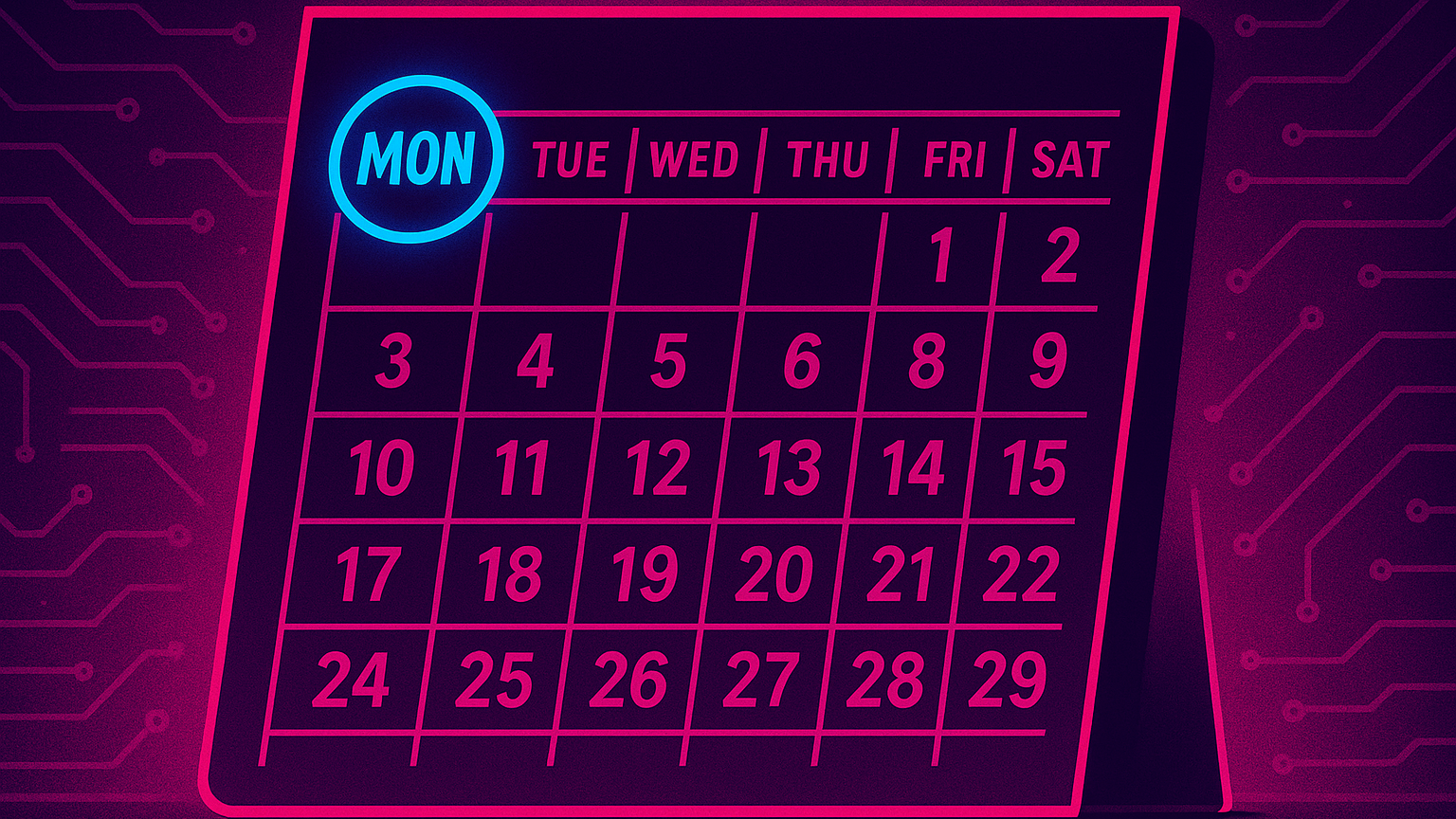
Real-World Example: Quiet Mondays
A 120-person distributor adopted Managed IT after weekly outages and late-night heroics. Standard images were rolled out, MFA enforced, and third-party patching brought under one schedule. The help desk began answering in minutes with clear P1/P2 paths. Within a quarter, escalations dropped, onboarding sped up, and leaders had visibility into patch rates and restore tests. Mondays stopped being “catch-up and firefight” days—and sales noticed.
Our Cybersecurity Guarantee
“At Fusion Cyber Group, we align our interests with yours.“
Unlike many providers who profit from lengthy, expensive breach clean-ups, our goal is simple: stop threats before they start and stand with you if one ever gets through.
That’s why we offer a cybersecurity guarantee: in the very unlikely event that a breach gets through our multi-layered, 24/7 monitored defenses, we will handle all:
threat containment,
incident response,
remediation,
eradication,
and business recovery—at no cost to you.
Ready to strengthen your cybersecurity defenses? Contact us today for your FREE network assessment and take the first step towards safeguarding your business from cyber threats!















